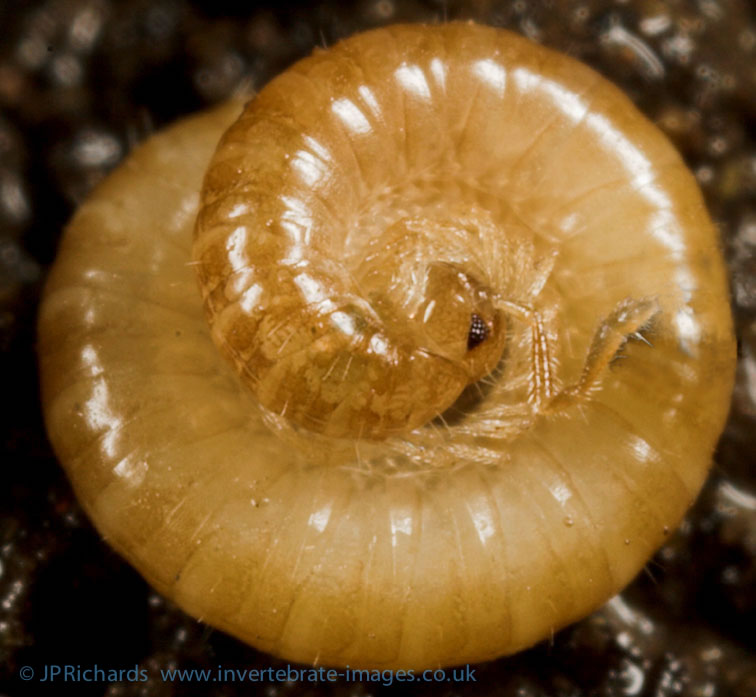Melogona gallica (Latzel, 1884)
Synonyms
Status:
GB IUCN status: Least Concern
ID Difficulty
Identification
Being pale brown, reaching 10mm in length, with 30 body rings and having ommatidia of the eye arranged in an acute triangle, this species is identical in appearance to the much rarer Melogona voigtii. The two can only be separated by examination of adult male gonopods or adult female vulvae (see Enghoff, 2016 or Gregory & Garnham, 2020).
Distribution
The distribution pattern of this species has become somewhat uncertain with the recent discovery of Melogona voigtii in Britain. Although the map shows all records submitted under the name M. gallica, most of these have not been confirmed by examination of male specimens and may include records of M. voigti. Melogona gallica s.l. is most frequent in the south and west of Britain but surprisingly there are records from just two sites in Ireland. Its absence from East Anglia and Kent may be due to the drier climate compared with western areas (Kime, 1995).
In Europe it has an extended Atlantic distribution occurring from southern France north to Holland and east to the Rhine valley (Kime, 2001). A record from Norway probably results from an introduction (Meidell, 1968).
Habitat
Kime (1990a) considered it a common woodland species and, although 64% of British records were from woodland, analysis of the habitat data suggests no strong relationships with any habitat. In Belgium the species has been linked with lower temperatures (Kime & Wauthy, 1984).
Phenology
It has an annual life cycle (David, 1984), at least in the south of its range, but Meyer found evidence suggestive of a two year cycle in samples from Delamere Forest, Cheshire (Blower, 1985). Adults have been found from October through to June but are most frequent in the winter and early spring.
This species account is based on Lee (2006).
References
Enghoff, H. (2016) Identification of North European Melogona females, and the first record of M. gallica (Latzel, 1884) from Denmark (Diplopoda, Chordeumatida: Chordeumatidae). Bulletin of the British Myriapod & Isopod Group 29: 42-43.
Links
MilliBase - Global catalogue of Millipedes: https://millibase.org/aphia.php?p=taxdetails&id=1024809







